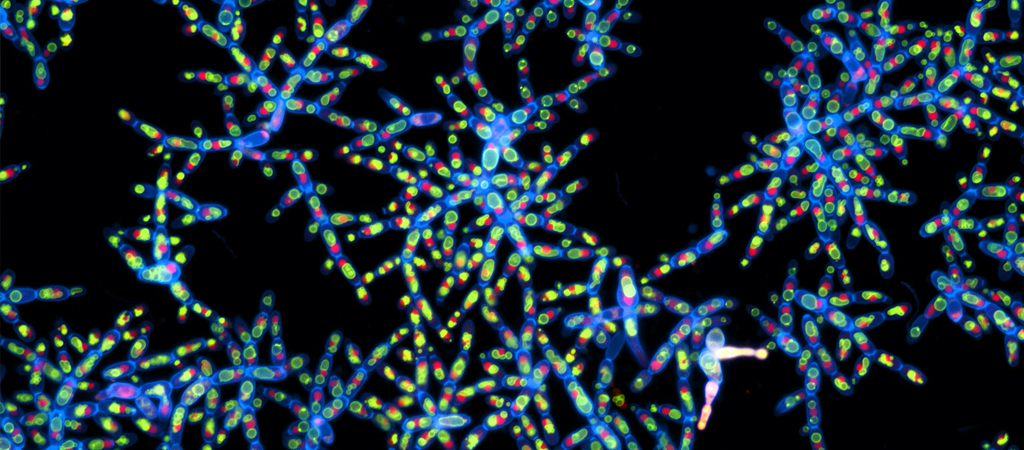Paul Rainey is director of the Department of Microbial Population Biology at the Max Planck Institute.
Rick Michod has a lab at the University of Arizona. Both study single-celled organisms that evolve into simple multicellular forms under certain conditions. Importantly, those conditions can be manipulated in the lab. Paul’s lab studies a bacterium called Pseudomonas fluorescens that you eat on your salad, and Rick studies Chlamydomonas, a volvocine green algae whose multicellular form is known as volvox, and lives in ponds all over the world.
In his descriptions of the global human superorganism, Teilhard draws upon analogy with complex biological multicellular organisms such as ourselves. In the Anatomy of the Noosphere, he writes:
“It may be said, speaking in very general terms, that in asserting the zoological nature of the Noosphere we confirm the sociologists’ view of human institutions as organic. Once the exceptional, but fundamentally biological, nature of the collective human complex is accepted, nothing prevents us (provided we take into account the modifications which have occurred in the dimensions in which we are working) from treating as authentic organs the diverse social organisms which have gradually evolved in the course of the history of the human race. Directly Mankind, from the nature of its origin, presents itself to our experience as a true superbody, the internal connections of this body, by reason of homogeneity, can only be treated and understood as superorgans and supermembers. Thus, for example (due allowance being made for the change of scale and environment), it becomes legitimate to talk in the sphere of economics of the existence and development of a circulatory or a nutritional system applicable to Mankind as a whole.”
Can the transition to multicellularity in the simple microbial systems that Paul and Rick study provide insight into our own transition to a social-technological superorganism of sorts?
There is a theme recurs throughout this conversation — the dynamic relationship between cooperation and conflict in evolutionary change, a key factor when major transitions take place. It’s interesting that the process of mediating conflict can lead to higher-level, interdependent relations among coalescing cells.
Can we draw any analogies between coalescing cells and, for example, coalescing nations on a globalizing planet? The real-world interactions between different kinds of societies are of course driven by many complex social, economic, and political forces. However, if we can understand the fundamental forces of cooperation and conflict as they evolve in simple systems with a limited number of states, can this understanding also provide insight into the evolution of the noosphere today?
In Teilhard’s terms, does it confirm the noosphere’s zoological nature, the view of human institutions as organic? Does it support the assertion — if we allow for “change of scale and environment” — that it’s valid to view economic systems as the equivalent of circulatory or nutritional systems for humankind?
In this conversation, David Sloan Wilson takes Paul and Rick through detailed explorations of each of their experimental biological systems, then asks them to speculate on whether and how their research might be applied to cultural evolutionary systems as well.
